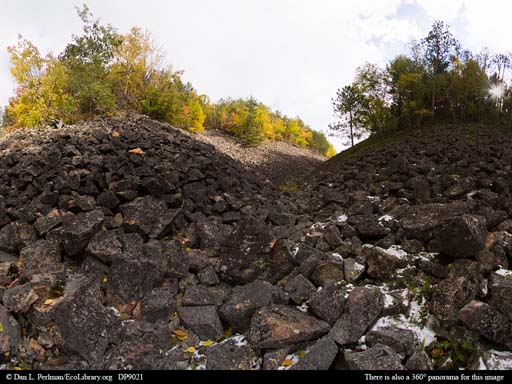Panorama: microhabitats in glacial valley
| Title | Info |
|---|---|
| Common name | Ferns; Lichens; Mosses |
| Source | Dan L. Perlman |
| Ecosystems | Other |
| Disturbance | Glacier |
| Geography and geology | Glacial meltwater-created valley |
| Lessons | Panoramas |
| Date | October 11, 2009 |
| Location | Blue Hills Felsenmeer State Natural Area,Rusk County,Wisconsin,USA,North America |

Panorama Viewing: Click the "View Panorama" button to see an interactive panorama. Click and drag your mouse in any direction to view other parts of the scene; press the Shift key to zoom in to see details and press Ctrl to zoom out.
We recommend using the Deval VR viewer for seeing panoramas that do NOT have sound and the QuickTime viewer for panoramas WITH sound.
This V-shaped valley was carved by meltwater from a nearby glacier more than 15,000 years ago. Over time, repeated freeze-thaw cycles caused the bedrock walls to fracture, creating the loose boulders seen here -- hence the name felsenmeer, which is German for a "sea of rock". The largely barren south-facing slope is significantly hotter and dryer than the north-facing slope, which is covered by mosses, ferns, and lichens (zoom in to see the difference). In addition, the reservoir of cool air among the rocks keeps the north-facing slope especially cool, so that the plants here are more typical of regions far to the north.